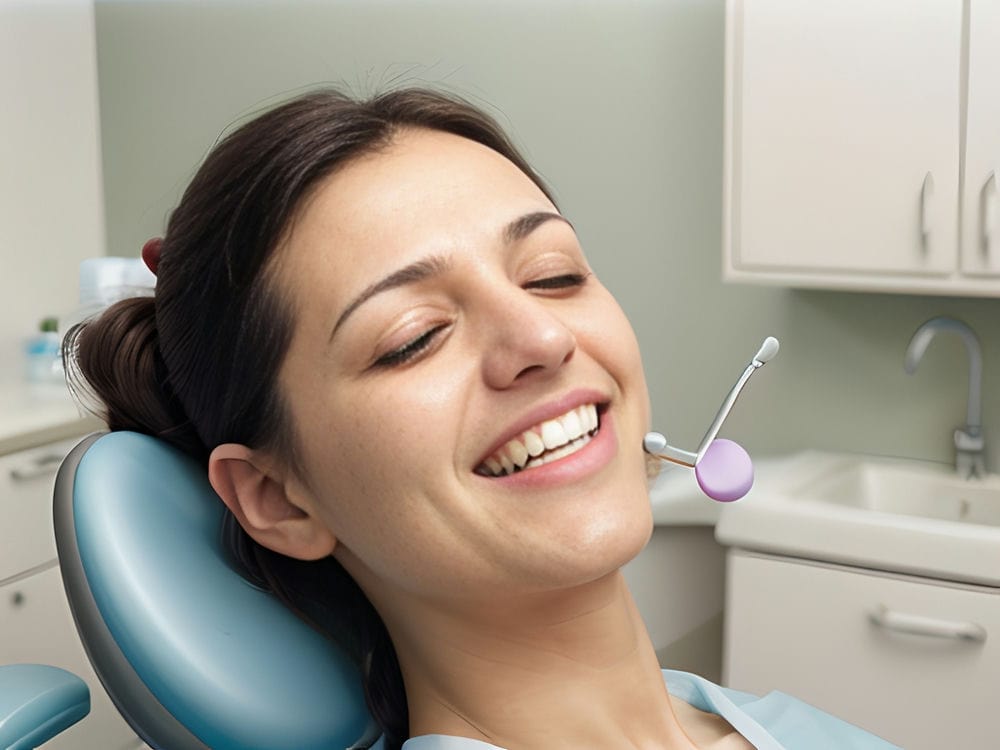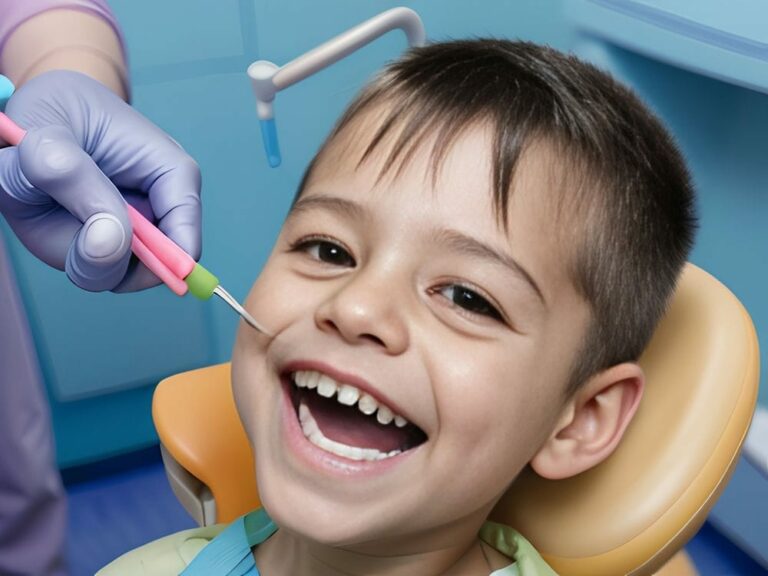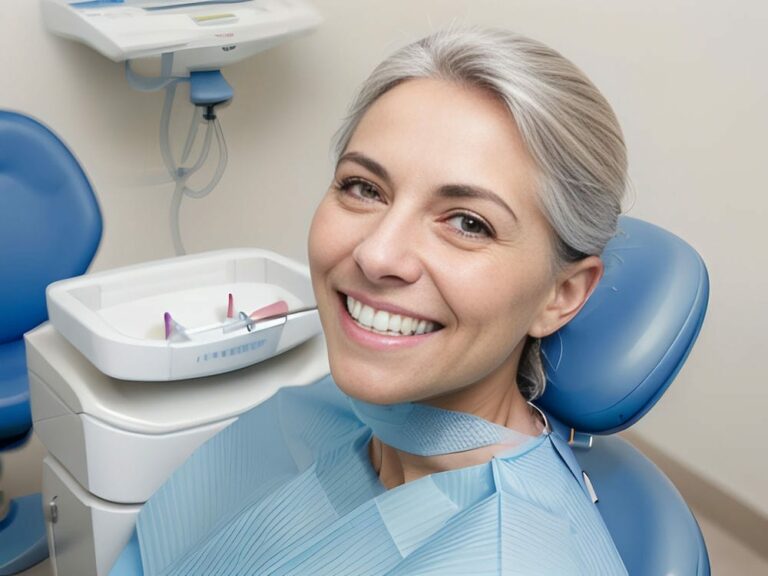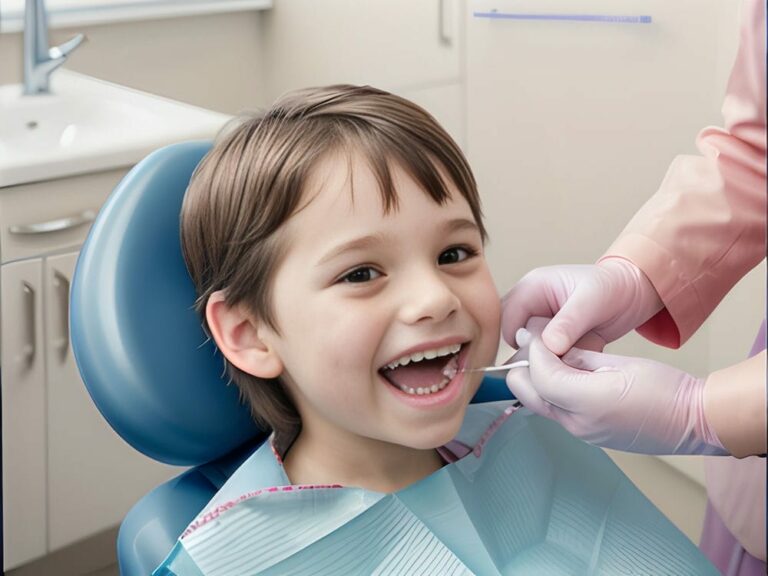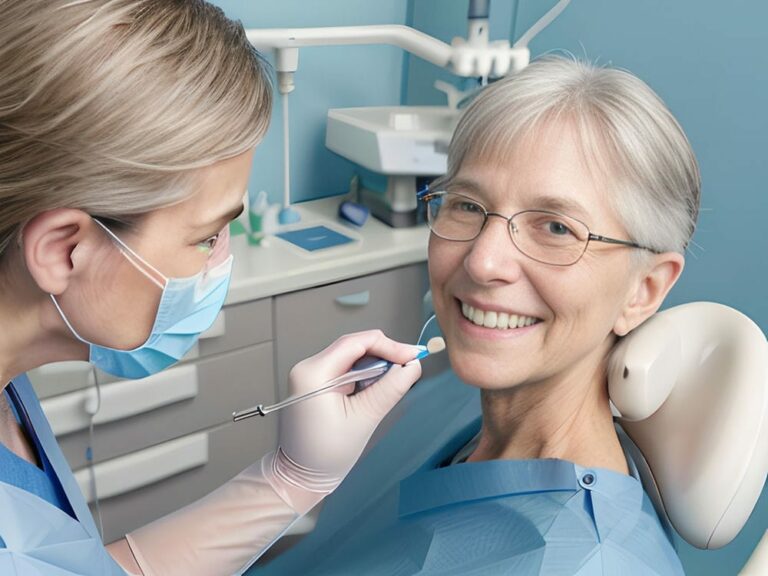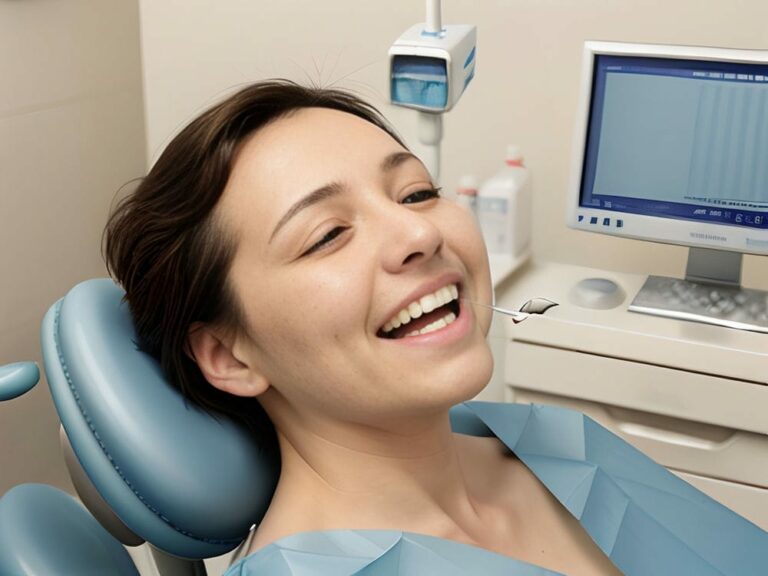The Importance of Preventative Dental Care
The Importance of Preventative Dental Care
Maintaining good oral hygiene is crucial for overall health. Preventative dental care plays a vital role in keeping our teeth and gums healthy, preventing tooth decay, gum disease, and other dental issues. Regular dental check-ups and cleanings are essential to detect any problems early on and prevent them from becoming more serious.
One of the main reasons why preventative dental care is so important is because it helps to identify potential issues before they worsen. By visiting a dentist regularly, any signs of tooth decay, gum disease, or oral cancer can be detected early on. This allows for prompt treatment and prevents these conditions from progressing into more severe problems that may require invasive procedures or even tooth loss.
In addition, preventative dental care focuses on teaching patients about proper oral hygiene techniques and habits. Dentists provide guidance on how to brush and floss effectively, as well as recommend suitable oral care products. By following these recommendations and practicing good oral hygiene at home, individuals can significantly reduce their risk of developing dental problems.
Overall, preventative dental care not only helps maintain a healthy smile but also contributes to better overall health. By addressing any potential issues early on and adopting good oral hygiene practices, individuals can enjoy strong teeth and gums throughout their lives. Regular check-ups with dentists combined with proper at-home care are the key to achieving optimal oral health.
Understanding the Role of Digital Monitoring Tools
Understanding the Role of Digital Monitoring Tools
Digital monitoring tools have revolutionized the field of dentistry by enhancing preventative dental care. These tools utilize advanced technology to gather and analyze data about a patient’s oral health, allowing dentists to make more accurate diagnoses and provide personalized treatment plans. By utilizing digital monitoring tools, dentists can detect dental issues at an early stage and take proactive measures to prevent further damage.
One of the key benefits of digital monitoring tools is their ability to provide real-time data about a patient’s oral health. For example, intraoral cameras can capture high-resolution images of the teeth and gums, allowing dentists to identify any areas of concern such as cavities or gum inflammation. This immediate access to visual information enables dentists to diagnose problems accurately and develop targeted treatment plans tailored to each patient’s specific needs.
Digital monitoring tools also allow for better tracking and monitoring of a patient’s oral health over time. By using devices such as dental sensors or digital radiography systems, dentists can compare current images with previous ones, enabling them to identify any changes or progression in dental conditions. This helps dentists track the effectiveness of treatments and make necessary adjustments if needed.
Incorporating digital monitoring tools into preventative dental care not only improves diagnosis and treatment planning but also enhances patient engagement and education. With these tools, dentists can show patients visual evidence of their oral health status, making it easier for them to understand the need for certain treatments or changes in oral hygiene practices. This empowers patients to take an active role in their own dental care and motivates them to maintain good oral hygiene habits.
By embracing digital monitoring tools, dentistry is entering a new era where preventative care can be more efficient, accurate, and personalized than ever before. These innovative technologies enable dentists to detect issues early on, monitor progress effectively, and educate patients about their oral health. As a result, individuals can enjoy improved overall health and a lifetime of strong, healthy teeth and gums.
Advantages of Using Digital Monitoring Tools for Dental Health
Digital monitoring tools have revolutionized the field of dentistry by enhancing preventative dental care. These tools utilize advanced technology to gather and analyze data about a patient’s oral health, allowing dentists to make more accurate diagnoses and provide personalized treatment plans. By utilizing digital monitoring tools, dentists can detect dental issues at an early stage and take proactive measures to prevent further damage.
One of the key benefits of digital monitoring tools is their ability to provide real-time data about a patient’s oral health. For example, intraoral cameras can capture high-resolution images of the teeth and gums, allowing dentists to identify any areas of concern such as cavities or gum inflammation. This immediate access to visual information enables dentists to diagnose problems accurately and develop targeted treatment plans tailored to each patient’s specific needs.
Digital monitoring tools also allow for better tracking and monitoring of a patient’s oral health over time. By using devices such as dental sensors or digital radiography systems, dentists can compare current images with previous ones, enabling them to identify any changes or progression in dental conditions. This helps dentists track the effectiveness of treatments and make necessary adjustments if needed.
Incorporating digital monitoring tools into preventative dental care not only improves diagnosis and treatment planning but also enhances patient engagement and education. With these tools, dentists can show patients visual evidence of their oral health status, making it easier for them to understand the need for certain treatments or changes in oral hygiene practices. This empowers patients to take an active role in their own dental care and motivates them to maintain good oral hygiene habits.
By embracing digital monitoring tools, dentistry is entering a new era where preventative care can be more efficient, accurate, and personalized than ever before. These innovative technologies enable dentists to detect issues early on, monitor progress effectively, and educate patients about their oral health. As a result, individuals can enjoy improved overall health and a lifetime of strong, healthy teeth and gums.
Exploring Different Types of Digital Monitoring Tools
The use of digital monitoring tools in dentistry has revolutionized preventative dental care. These advanced technologies gather and analyze data about a patient’s oral health, allowing dentists to make more accurate diagnoses and provide personalized treatment plans. By utilizing these tools, dentists can detect dental issues at an early stage and take proactive measures to prevent further damage.
One major advantage of digital monitoring tools is their ability to provide real-time data about a patient’s oral health. For instance, intraoral cameras capture high-resolution images of the teeth and gums, enabling dentists to identify areas of concern such as cavities or gum inflammation immediately. This instant access to visual information allows for accurate diagnoses and tailored treatment plans.
Furthermore, digital monitoring tools facilitate better tracking and monitoring of a patient’s oral health over time. Devices like dental sensors or digital radiography systems allow dentists to compare current images with previous ones, identifying any changes or progression in dental conditions. This helps track the effectiveness of treatments and make necessary adjustments when required.
Incorporating digital monitoring tools into preventative dental care not only improves diagnosis and treatment planning but also enhances patient engagement and education. Dentists can use these tools to visually show patients the status of their oral health, making it easier for them to understand the need for certain treatments or changes in oral hygiene practices. This empowers patients to play an active role in their own dental care and motivates them to maintain good oral hygiene habits.
By embracing digital monitoring tools, dentistry enters a new era where preventative care can be more efficient, accurate, and personalized than ever before. These innovative technologies enable dentists to detect issues early on, monitor progress effectively, and educate patients about their oral health. As a result, individuals can enjoy improved overall health and a lifetime of strong, healthy teeth and gums.
How Digital Monitoring Tools Help Identify Early Warning Signs
Digital monitoring tools play a crucial role in identifying early warning signs of dental issues, allowing dentists to intervene and prevent further damage. These advanced technologies provide dentists with real-time data about a patient’s oral health, enabling them to detect problems at an early stage.
One way digital monitoring tools help identify early warning signs is through their ability to capture high-resolution images of the teeth and gums. Intraoral cameras, for example, allow dentists to examine areas of concern such as cavities or gum inflammation immediately. This instant access to visual information allows for accurate diagnoses and timely intervention.
Another benefit of digital monitoring tools is their ability to track and monitor changes in a patient’s oral health over time. By comparing current images with previous ones, dentists can identify any progression or deterioration in dental conditions. This helps detect early warning signs that may have otherwise gone unnoticed, allowing for proactive measures to be taken before the issue worsens.
Incorporating digital monitoring tools into dental care enhances preventative measures by enabling dentists to intervene at the earliest possible stage. By detecting and addressing early warning signs, dentists can prevent more serious dental issues from developing, saving patients from unnecessary pain, discomfort, and costly treatments.
Through the use of digital monitoring tools, dentistry has entered a new era where proactive care is prioritized. Dentists can now identify potential problems before they become major concerns and provide personalized treatment plans accordingly. By embracing these innovative technologies, individuals can enjoy better oral health outcomes and a lifetime of strong teeth and gums.
Enhancing Oral Hygiene Practices with Digital Monitoring Tools
Digital monitoring tools not only help identify early warning signs of dental issues, but they also play a vital role in enhancing oral hygiene practices. These advanced technologies provide patients with real-time feedback and guidance on their brushing and flossing techniques, allowing them to maintain optimal oral health.
One way digital monitoring tools enhance oral hygiene practices is through their ability to provide immediate feedback on brushing techniques. Smart toothbrushes, for example, can track the duration and pressure applied during brushing. They can also detect missed areas and provide real-time guidance on how to improve brushing habits. This helps individuals develop effective brushing techniques and ensures that all areas of the mouth are thoroughly cleaned.
In addition to providing feedback on brushing habits, digital monitoring tools can also remind individuals to maintain regular oral hygiene routines. Many devices have built-in timers or reminders that notify users when it’s time to brush or floss. These reminders help establish consistent oral care habits and prevent lapses in routine that can lead to dental problems.
By incorporating digital monitoring tools into their daily oral care routines, individuals can take a proactive approach towards maintaining their oral health. These tools empower patients by providing them with personalized feedback and reminders, making it easier for them to practice good oral hygiene habits consistently.
With the assistance of these innovative technologies, individuals can achieve better oral health outcomes and reduce the risk of developing dental issues in the long run. By embracing digital monitoring tools as part of their daily routine, individuals can enjoy healthy teeth and gums for a lifetime without compromising on preventive dental care.
Improving Patient Engagement and Compliance through Technology
Digital monitoring tools not only help identify early warning signs of dental issues, but they also play a vital role in enhancing oral hygiene practices. These advanced technologies provide patients with real-time feedback and guidance on their brushing and flossing techniques, allowing them to maintain optimal oral health.
One way digital monitoring tools enhance oral hygiene practices is through their ability to provide immediate feedback on brushing techniques. Smart toothbrushes, for example, can track the duration and pressure applied during brushing. They can also detect missed areas and provide real-time guidance on how to improve brushing habits. This helps individuals develop effective brushing techniques and ensures that all areas of the mouth are thoroughly cleaned.
In addition to providing feedback on brushing habits, digital monitoring tools can also remind individuals to maintain regular oral hygiene routines. Many devices have built-in timers or reminders that notify users when it’s time to brush or floss. These reminders help establish consistent oral care habits and prevent lapses in routine that can lead to dental problems.
By incorporating digital monitoring tools into their daily oral care routines, individuals can take a proactive approach towards maintaining their oral health. These tools empower patients by providing them with personalized feedback and reminders, making it easier for them to practice good oral hygiene habits consistently.
With the assistance of these innovative technologies, individuals can achieve better oral health outcomes and reduce the risk of developing dental issues in the long run. By embracing digital monitoring tools as part of their daily routine, individuals can enjoy healthy teeth and gums for a lifetime without compromising on preventive dental care.
Addressing Common Challenges with Digital Monitoring Tools
Digital monitoring tools have revolutionized the way we approach preventative dental care. These advanced technologies not only help identify early warning signs of dental issues but also play a vital role in enhancing oral hygiene practices. By providing real-time feedback and guidance, these tools empower individuals to maintain optimal oral health.
One way digital monitoring tools enhance oral hygiene practices is through their ability to provide immediate feedback on brushing techniques. Smart toothbrushes, for example, can track the duration and pressure applied during brushing and detect missed areas. By offering real-time guidance on how to improve brushing habits, individuals can develop effective techniques that ensure all areas of the mouth are thoroughly cleaned.
In addition to providing feedback on brushing habits, digital monitoring tools can also remind individuals to maintain regular oral hygiene routines. With built-in timers or reminders, these devices notify users when it’s time to brush or floss. These reminders help establish consistent oral care habits and prevent lapses in routine that can lead to dental problems.
By incorporating digital monitoring tools into their daily oral care routines, individuals can take a proactive approach towards maintaining their oral health. These tools empower patients by providing personalized feedback and reminders, making it easier for them to practice good oral hygiene consistently. With the assistance of these innovative technologies, individuals can achieve better oral health outcomes and reduce the risk of developing dental issues in the long run. Embracing digital monitoring tools as part of their daily routine allows individuals to enjoy healthy teeth and gums for a lifetime without compromising on preventive dental care.
Integrating Digital Monitoring Tools into Dental Practices
Digital monitoring tools have revolutionized the way we approach preventative dental care. These advanced technologies not only help identify early warning signs of dental issues but also play a vital role in enhancing oral hygiene practices. By providing real-time feedback and guidance, these tools empower individuals to maintain optimal oral health.
One way digital monitoring tools enhance oral hygiene practices is through their ability to provide immediate feedback on brushing techniques. Smart toothbrushes, for example, can track the duration and pressure applied during brushing and detect missed areas. By offering real-time guidance on how to improve brushing habits, individuals can develop effective techniques that ensure all areas of the mouth are thoroughly cleaned.
In addition to providing feedback on brushing habits, digital monitoring tools can also remind individuals to maintain regular oral hygiene routines. With built-in timers or reminders, these devices notify users when it’s time to brush or floss. These reminders help establish consistent oral care habits and prevent lapses in routine that can lead to dental problems.
By incorporating digital monitoring tools into their daily oral care routines, individuals can take a proactive approach towards maintaining their oral health. These tools empower patients by providing personalized feedback and reminders, making it easier for them to practice good oral hygiene consistently. With the assistance of these innovative technologies, individuals can achieve better oral health outcomes and reduce the risk of developing dental issues in the long run. Embracing digital monitoring tools as part of their daily routine allows individuals to enjoy healthy teeth and gums for a lifetime without compromising on preventive dental care.
Future Trends in Digital Monitoring Tools for Preventative Dental Care
The future of digital monitoring tools for preventative dental care looks promising, with advancements in technology expected to further enhance oral health practices. One trend that we can expect to see is the integration of artificial intelligence (AI) into these tools. AI algorithms can analyze data collected by the devices and provide personalized recommendations for improving oral hygiene routines. This will enable individuals to receive tailored guidance specific to their unique needs, ultimately leading to better oral health outcomes.
Another exciting development on the horizon is the use of virtual reality (VR) and augmented reality (AR) in dental monitoring tools. VR and AR technologies have already been utilized in various medical fields, and dentistry is no exception. These immersive technologies can create interactive experiences that help patients understand their oral health conditions and treatment options more effectively. By providing visual representations of dental issues, individuals can make informed decisions about their oral care and take proactive steps towards prevention.
Additionally, there is a growing focus on connectivity between digital monitoring tools and dental professionals. With the rise of telehealth and remote patient monitoring, individuals will be able to share real-time data with their dentists from the comfort of their homes. This allows for proactive intervention when potential issues are detected early on, reducing the need for emergency visits or invasive treatments. The seamless integration of digital monitoring tools into dental practice workflows will not only improve patient outcomes but also streamline communication between patients and providers.
As we look ahead, the future of digital monitoring tools in preventative dental care holds great promise. With advancements in AI, VR/AR technology, and increased connectivity with healthcare providers, these tools will continue to empower individuals to take control of their oral health. By embracing these innovations, patients can foster a preventive mindset while enjoying optimal dental well-being for years to come.
FAQs
Q: What are digital monitoring tools?,
A: Digital monitoring tools are devices or software used in dentistry to track and measure various aspects of oral health.,
Q: How do digital monitoring tools enhance preventative dental care?,
A: Digital monitoring tools provide real-time data on oral health, allowing dentists to identify potential issues early and take proactive measures to prevent dental problems.,
Q: What types of data can be collected by digital monitoring tools?,
A: Digital monitoring tools can collect data on brushing habits, teeth alignment, bite force, gum health, and even detect signs of dental decay or gum disease.,
Q: Can digital monitoring tools be used at home?,
A: Yes, some digital monitoring tools are designed for use at home, allowing individuals to track their oral health progress and share the data with their dentist.,
Q: How can digital monitoring tools help with teeth alignment?,
A: Digital monitoring tools can track the progress of orthodontic treatments, such as braces or aligners, ensuring that teeth are moving in the right direction and at the expected pace.,
Q: Are digital monitoring tools suitable for all age groups?,
A: Yes, digital monitoring tools can be used by individuals of all age groups, from children to adults, to monitor and improve their oral health.,
Q: Do digital monitoring tools replace regular dental check-ups?,
A: No, digital monitoring tools complement regular dental check-ups by providing additional data and insights to dentists, but they do not replace the need for professional examinations.,
Q: Are digital monitoring tools expensive?,
A: The cost of digital monitoring tools can vary depending on the type and functionality. Some tools are affordable and readily available, while others may be more expensive and require professional installation.,
Q: Can digital monitoring tools help in detecting oral cancer?,
A: Yes, some advanced digital monitoring tools can detect early signs of oral cancer by analyzing changes in the oral tissues and alerting individuals to seek further medical attention.,
Q: Are digital monitoring tools easy to use?,
A: Yes, most digital monitoring tools are designed to be user-friendly and easy to use, with simple interfaces and clear instructions for individuals to follow.








